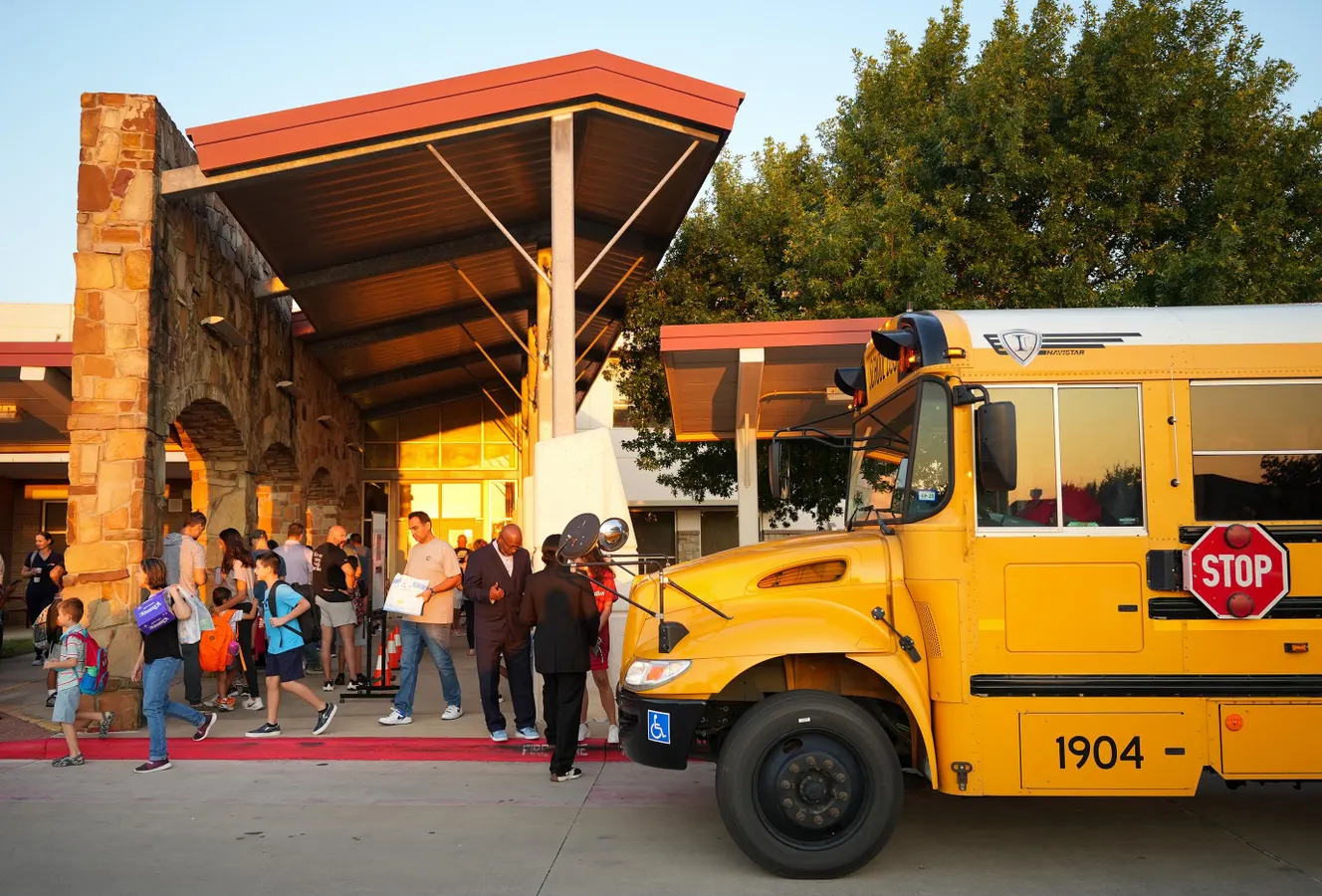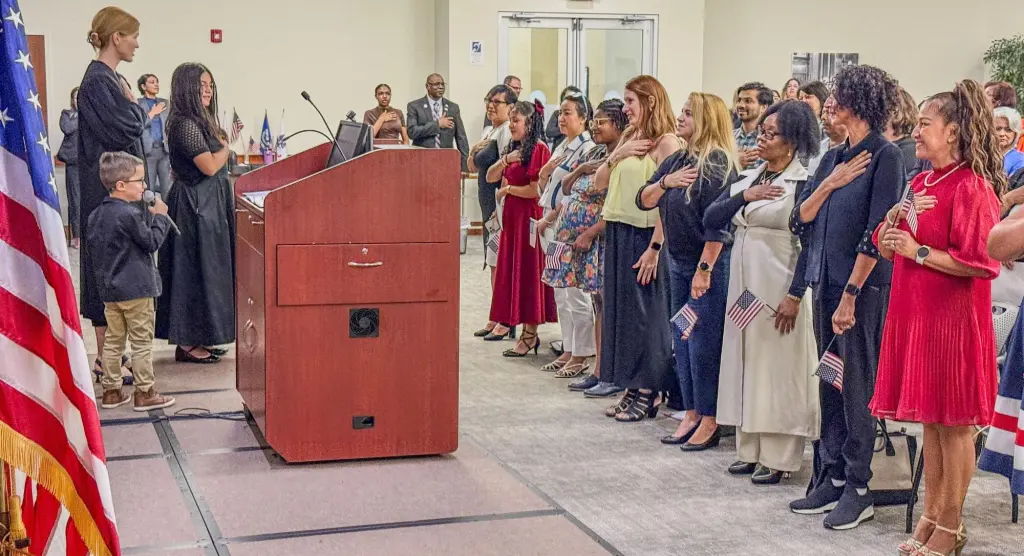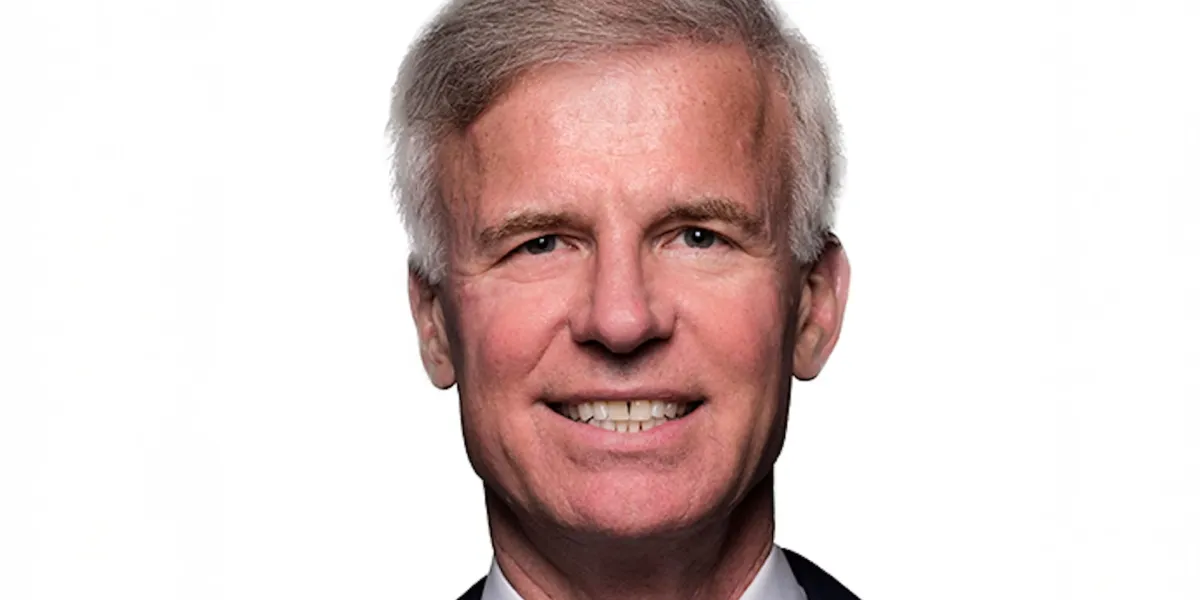By Contributor,Sara Schapiro
Copyright forbes

As students, teachers, and families settle into a new school year, school system leaders are laying out bold visions for student improvement.
The Austin American-Statesman via Getty Images
As students, teachers, and families settle into a new school year, a cohort of school system leaders are laying out bold visions for student improvement. The newly launched National Education R&D Advisory Committee represents traditional and charter school districts, in rural, suburban, and urban communities across the country. What binds these leaders is their commitment to prioritizing both evidence and innovation to improve outcomes for students.
I recently had the opportunity to speak with two of the committee members: Dr. Suzanne Lacey, Superintendent of Talladega County Schools in Alabama and Cady Ching, CEO for Summit Public Schools in California and Washington. While I knew they viewed research and evidence as driving forces behind school system transformation, I wanted to learn how this informs their leadership and creates positive change in their communities. In our conversation, Suzanne and Cady share their visions for the new school year, the challenges they face, and how they are using evidence and innovation to overcome them.
As you embark on a new school year, what’s something new and evidence-based that your school system is trying out? How will you measure its impact in your school community?
Suzanne: This year, we’re strengthening our ‘Experts Down the Hall’ model, where teachers learn from one another through peer coaching and shared practice. This effort is grounded in research that shows collaborative professional learning has a direct impact on student outcomes. We’ll measure our progress through classroom observation data, student engagement indicators, and achievement growth.
How about at Summit Public Schools?
Cady: A recent national study shows Summit alumni are thriving—earning more in strong early careers and carrying less debt than peers. This year, we’re accelerating outcomes by deepening career-connected learning through our Expeditions Program, designed from listening to our students and families. Starting in 6th grade, students gain real-world experiences and mentorship aligned with high-opportunity careers. With 700+ local and national partners, we’re now codifying what makes a partnership truly impactful. By tracking engagement, enrollment, and post-graduation readiness, we aim to prove that schools can offer preparation for a traditional four-year college while also expanding access to high-quality workforce pathways.
That’s such important work. I’m eager to follow your progress across the year.
Let’s turn to challenges. What’s an example of a challenge your school system faces that you are trying to solve? How does R&D factor into your solutions?
MORE FOR YOU
Cady: Our students need durable skills that will serve them for life. We believe schools can’t afford to stand still, which is why Summit is committed to regularly refreshing and updating our core skills to ensure they remain relevant. The skills students need today are very different from those required in school 10, 20, or 30 years ago. We’ve entered the era of AI. Period. At Summit, we promise families that their children will graduate ready for adult life, which now means graduating AI literate. This year, our teachers are piloting approaches to integrate AI skills into real-world projects, testing and refining until we find what works, with plans to scale across our system. By combining timeless foundations with continuous improvement, we keep our graduates truly future-ready.
Suzanne: One of our greatest challenges is ensuring that students in a rural, high-poverty district have the same access to future-ready opportunities as students in larger, more affluent areas. For us, equity is about more than providing devices or the internet; it’s about creating authentic pathways into computational thinking, STEM, and career and technical education so that our students can thrive in a global economy. Through our partnership with Digital Promise and the National Science Foundation, we’ve been able to pilot innovative programs like the Computational Thinking Pathways Collaborative. These research-based projects give our teachers professional learning grounded in evidence, and they allow us to test, refine, and scale new approaches to instruction.
What’s one policy or funding change that would enable you to drive more evidence-based innovation across your schools?
Suzanne: If I could change one thing, it would be creating sustainable funding streams specifically for rural districts to innovate. Too often, we rely on short-term competitive grants, which can spark great ideas but are difficult to sustain once the funding ends. For example, our district was selected to implement a Cybersecurity Pathway for our high school students. Short term funding was provided for training, resources, and to assist in paying for one teacher. Seeing the tremendous impact of the program, we would love to expand it by adding more teachers. Rural districts lack opportunities for local funding that urban areas have, so we are limited in adding personnel above what we earn from our state. What would truly accelerate evidence-based innovation is policy that provides long-term investment in research-practice partnerships and in teacher development.
Cady: Like Suzanne, I would call for more sustained investments in education R&D. Public education needs a stably funded research and development engine—one that drives fast-cycle, practitioner-driven innovation. In most sectors, research and development is a core function. In education, it’s too often treated like an ‘extra’ and funded via one-off grants. This makes it too slow, too fragile, and too theoretical. We need stable funding and durable partners who build with us, move intentionally, and return actionable tools—not just long reports. If we want better outcomes and real lasting impact from R&D, we need systems that invest in how we get better, not just whether we did.
When the 2025-26 school year is over, what do you hope to be able to say about your school district/CMO?
Cady: That our innovation led to real solutions—not just new ideas, but stronger outcomes for students and teachers. That we didn’t innovate for people, we built solutions with them. That our schools got better because we took the time to listen, learn, try and improve. And that we didn’t keep it to ourselves—we shared what worked so others could do it too.
Suzanne: I hope to be able to say that Talladega County Schools not only continued to grow academically but also created even more opportunities for students to discover their passions and prepare for their futures. My goal is for every student from our youngest learners to our graduating seniors is to feel that they were seen, supported, and challenged in meaningful ways.
I want to be able to point to the fact that we expanded our computational thinking and career pathways, deepened our partnerships with the community, and fostered a culture of joy in learning. Most importantly, I want to be able to say that our students are leaving us confident, capable, and ready to thrive because when they succeed, our entire community rises with them.
Editorial StandardsReprints & Permissions



